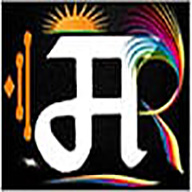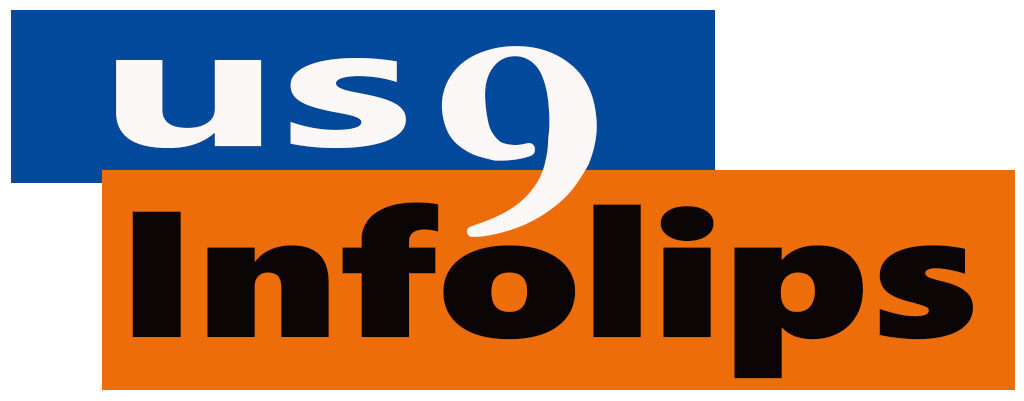Nikola Tesla: The Genius Who Electrified the World: Nikola Tesla Biography
Nikola Tesla Biography: Complete Information :
Table of Contents
1. Early Life and Education
Nikola Tesla was born on July 10, 1856, in Smiljan, Croatia, which was then part of the Austrian Empire. His father was a priest, and his mother was an inventor of household appliances. Tesla showed an early interest in science and electricity.
He studied electrical engineering at the Austrian Polytechnic in Graz and later attended the University of Prague.
2. Move to the United States
In 1884, Tesla moved to the United States to work for Thomas Edison. He arrived in New York with only a few cents in his pocket and a letter of recommendation from Charles Batchelor, one of Edison’s associates.
The letter famously stated, “I know two great men and you are one of them; the other is this young man.”
3. Collaboration and Rivalry with Edison
Tesla initially worked for Edison, helping to improve the company’s direct current (DC) generators. However, the two had different visions for the future of electrical power. Tesla believed in alternating current (AC) as a more efficient system for electrical transmission, leading to a professional and personal rivalry with Edison, who was a strong proponent of DC.
4. Invention of AC Motor
Tesla’s work on alternating current led to the invention of the AC motor, which could efficiently convert electrical energy into mechanical energy. This invention was a major breakthrough and laid the foundation for modern electrical power distribution systems.
George Westinghouse, an industrialist, bought the patents for Tesla’s AC motor and provided the support needed to develop the technology further.
5. The War of Currents
Tesla and Westinghouse faced fierce competition from Edison in what became known as the War of Currents. Edison promoted DC as the safer and superior method, while Tesla and Westinghouse advocated for AC.
The conflict was marked by intense public campaigns and demonstrations. Eventually, AC emerged victorious, becoming the standard for electricity transmission due to its greater efficiency and ability to be transmitted over long distances.
6. Radio and Wireless Transmission
Tesla made significant contributions to the development of radio and wireless transmission. He demonstrated the feasibility of wireless communication through his experiments and was granted several patents related to radio technology.
Although Guglielmo Marconi is often credited with the invention of radio, Tesla’s earlier work laid the groundwork for this innovation.
7. Inventions and Patents
Throughout his career, Tesla was a prolific inventor, holding over 300 patents worldwide. Some of his notable inventions include the Tesla coil, which is still used in radio technology and electrical experiments, and the induction motor.
Tesla also developed concepts for wireless energy transmission and advanced theories on the potential use of Earth as a conductor for energy.
8. Later Years and Financial Struggles
Despite his numerous inventions and contributions to science, Tesla faced financial difficulties later in life. He was not a savvy businessman and often struggled to secure funding for his projects. Many of his ideas were ahead of their time, and he failed to gain the necessary support to bring them to fruition.
Tesla spent his later years living in New York hotels, often leaving unpaid bills.
9. Legacy and Recognition
Nikola Tesla passed away on January 7, 1943, in New York City. His contributions to science and technology were not fully recognized during his lifetime, but his legacy has grown significantly since his death.
Tesla is now celebrated as one of the greatest inventors and visionaries in history. Many modern technologies, including wireless communication, AC power systems, and advanced robotics, owe their existence to his pioneering work.
Cultural Impact:
Tesla’s life and work have inspired numerous books, movies, and TV shows. He is often portrayed as a brilliant but misunderstood genius. The Tesla car company, founded by Elon Musk, is named in his honor, further cementing his place in popular culture.
Tesla’s vision of a future powered by renewable energy and wireless technology continues to influence modern scientific and technological advancements.
Best Facts About Nikola Tesla
- Born During a Lightning Storm:
Nikola Tesla was born at the stroke of midnight on July 10, 1856, during a fierce lightning storm. According to family legend, the midwife declared that the storm was a bad omen, but Tesla’s mother responded, “No, he will be a child of light.” - Polyglot and Photographic Memory:
Tesla was known to be fluent in eight languages: Serbian, Croatian, Czech, English, French, German, Hungarian, and Italian. He also had a photographic memory, which allowed him to recall entire books and images with great precision. - Invented the Tesla Coil:
One of Tesla’s most famous inventions is the Tesla coil, created in 1891. The Tesla coil is an electrical resonant transformer circuit used to produce high-voltage, low-current, high-frequency alternating-current electricity. It is still used today in radio technology and various experiments. - Dreams of Wireless Electricity:
Tesla envisioned a world where electricity could be transmitted wirelessly. He built the Wardenclyffe Tower on Long Island, New York, in 1901, aiming to provide free wireless electricity to the world. Unfortunately, the project was never completed due to financial problems. - Developed the First Remote Control:
In 1898, Nikola Tesla demonstrated the first remote-controlled boat at Madison Square Garden. This invention was a precursor to modern remote-controlled devices and showcased his forward-thinking approach to technology. - The AC vs. DC War:
Tesla’s advocacy for alternating current (AC) led to a fierce rivalry with Thomas Edison, who promoted direct current (DC). The “War of Currents” was marked by public demonstrations and debates. Tesla’s AC system eventually became the standard for electrical power distribution due to its efficiency over long distances. - Pioneering Work in Robotics :
Tesla was one of the first to conceptualize and develop basic robotic technology. He believed that machines could be made to perform tasks automatically and even envisioned a future where robots could assist humans in various capacities. - Pigeon Lover:
Later in life, Tesla developed a deep affection for pigeons. He would spend hours in parks feeding and caring for them. Tesla claimed to have a special connection with one particular white pigeon, which he said he loved as a man loves a woman. - Unrealized Inventions:
Tesla had many ideas that were never fully realized, including plans for a “death ray,” a directed-energy weapon he called the “Teleforce.” He also envisioned a global system of wireless communication and power transmission, which he believed could bring free energy to everyone.
Unknown Facts About Nikola Tesla
- Unique Sleeping Habits:
Nikola Tesla claimed to sleep very little, averaging only about two hours per night. He often took short naps during the day to recharge. He believed that this pattern of sleep contributed to his productivity and creativity. - Unusual Diet and Hygiene:
Tesla was a vegetarian and had very particular eating habits. He often consumed only milk, bread, honey, and vegetable juices. He was also highly conscious of his hygiene, washing his hands frequently and avoiding physical contact with others. - Obsessed with the Number Three:
Tesla had a strong obsession with the number three. He would walk around a block three times before entering a building and would often repeat actions three times. This compulsion extended to his daily routines and habits. - Photographic Memory and Visualization Skills:
Tesla’s incredible memory allowed him to memorize entire books and visualize intricate machines in his mind. He often designed his inventions entirely in his head before committing them to paper, claiming he could test and run his devices in his imagination. - Pioneer in Renewable Energy:
Tesla was an early advocate for renewable energy. He believed that humanity should harness the natural forces of the Earth, such as solar, wind, and hydroelectric power, to achieve sustainable energy. His vision was far ahead of his time. - Friendship with Mark Twain:
Nikola Tesla and the famous author Mark Twain were good friends. Twain frequently visited Tesla’s laboratory, fascinated by his experiments. Tesla even credited Twain’s advice with helping him recover from a serious illness in his youth. - The First Hydroelectric Power Plant :
Nikola Tesla designed the world’s first hydroelectric power plant at Niagara Falls, which became operational in 1895. This project was a significant milestone in the adoption of AC power and showcased the potential of renewable energy sources. - Advanced Theories on Communication with Extraterrestrials :
Tesla believed that his experiments with radio waves and electrical transmissions could potentially communicate with extraterrestrial life. In 1899, he reported receiving unusual signals, which he interpreted as messages from intelligent beings on Mars. - Struggles with Obsessive-Compulsive Disorder (OCD):
Tesla’s eccentric behaviors and rituals are now understood to be symptoms of obsessive-compulsive disorder (OCD). His meticulous attention to detail and repetitive actions were driven by this condition, which also contributed to his unique approach to problem-solving and invention.
Best Awards Achieved by Nikola Tesla:
1. Elliott Cresson Medal (1894):
The Franklin Institute awarded Tesla the Elliott Cresson Medal for his contributions to the development of the induction motor and the alternating current power system. This prestigious medal recognized his significant advancements in electrical engineering.
2. Order of St. Sava, II Class (1892):
Tesla received the Order of St. Sava from the Kingdom of Serbia for his achievements in science and his contributions to the field of electricity. This honor highlighted his international influence and the global recognition of his work.
3. Order of Prince Danilo I (1895):
Awarded by the Kingdom of Montenegro, the Order of Prince Danilo I was given to Tesla for his scientific achievements and his role in promoting progress in electrical engineering.
4. AIEE Edison Medal (1917):
The American Institute of Electrical Engineers (now IEEE) honored Tesla with the Edison Medal, acknowledging his pioneering work in electrical science and engineering. This award is one of the highest honors in the field of electrical engineering.
5. John Scott Medal (1934):
The City of Philadelphia presented Tesla with the John Scott Medal for his revolutionary contributions to electrical technology and his numerous inventions, which greatly advanced the industry.
6. Order of the White Eagle, I Class (1936):
Tesla received the Order of the White Eagle, the highest honor awarded by the Kingdom of Yugoslavia, recognizing his exceptional contributions to science and technology.
7. Order of the Yugoslav Crown (1931):
This order was bestowed upon Tesla on the occasion of his 75th birthday by the Kingdom of Yugoslavia, celebrating his lifetime achievements and his status as a national hero.
8. Medal of the University of Paris (1937):
Tesla was awarded a medal by the University of Paris, also known as the Sorbonne, for his contributions to science and his influential work in the field of electricity and magnetism.
9. Grand Cross of the Order of the White Lion (1937):
Czechoslovakia honored Tesla with the Grand Cross of the Order of the White Lion, one of its highest awards, recognizing his outstanding contributions to science and his enduring impact on modern technology.
Best Social Works Done by Nikola Tesla
1. Promotion of Renewable Energy
Nikola Tesla was a strong advocate for renewable energy sources. He envisioned a world powered by clean energy, such as hydroelectric, solar, and wind power. His work in developing the first hydroelectric power plant at Niagara Falls was a significant step toward this vision.
2. Advancing Global Communication
Nikola Tesla’s pioneering work in wireless communication laid the groundwork for modern telecommunications. His experiments with radio waves and wireless transmission helped pave the way for technologies that connect people worldwide, enhancing global communication and accessibility.
3. Vision for Free Energy
Tesla believed in providing free, wireless energy to the world. His ambitious Wardenclyffe Tower project aimed to transmit electricity wirelessly, making energy accessible to everyone, regardless of their socioeconomic status. Although the project was never completed, Tesla’s vision continues to inspire efforts toward equitable energy distribution.
4. Promotion of Scientific Education :
Tesla was passionate about science and education. He frequently gave lectures and demonstrations to share his knowledge and inspire future generations of scientists and engineers. His efforts helped popularize science and technology, making them more accessible to the public.
5. Support for Inventors and Innovators:
Tesla was known for his generosity toward fellow inventors and innovators. He often shared his ideas and provided assistance to those working on new technologies. His collaborative spirit and willingness to help others advanced the field of electrical engineering.
6. Improving Urban Infrastructure:
Tesla’s inventions and advancements in electrical engineering significantly improved urban infrastructure. His work on AC power systems enabled the widespread distribution of electricity, leading to the electrification of cities and improving the quality of life for millions of people.
7. Environmental Awareness:
Tesla was ahead of his time in recognizing the importance of environmental sustainability. He advocated for the use of natural resources in a way that minimized harm to the planet. His vision for a sustainable future continues to influence modern environmental movements.
8. Advocacy for Innovation and Progress:
Tesla’s relentless pursuit of innovation and progress had a profound impact on society. His belief in the power of technology to transform lives and his commitment to pushing the boundaries of what was possible inspired countless individuals to pursue careers in science and engineering.
9. Humanitarian Contributions:
Nikola Tesla: Tesla’s inventions and discoveries had far-reaching humanitarian benefits. His work on improving electrical safety and efficiency made electricity more affordable and accessible, enhancing living conditions and contributing to economic development.
Conclusion:
Nikola Tesla’s groundbreaking inventions and visionary ideas revolutionized the world of science and technology. His contributions to electrical engineering, wireless communication, and renewable energy continue to shape modern society.
Despite facing numerous challenges, Tesla’s legacy as a pioneering genius and humanitarian endures, inspiring future generations to push the boundaries of innovation and progress.
FAQs About Nikola Tesla:
Q.1: Who was Nikola Tesla?
A: Nikola Tesla was an inventor and electrical engineer known for his contributions to the development of alternating current (AC) electricity, wireless communication, and numerous other technologies.
Q.2: What is Nikola Tesla famous for?
A: Tesla is most famous for his work on AC power systems, the Tesla coil, and his visionary ideas about wireless energy transmission.
Q.3: Where was Nikola Tesla born?
A: Tesla was born on July 10, 1856, in Smiljan, Croatia, which was then part of the Austrian Empire.
Q.4: Did Nikola Tesla work with Thomas Edison?
A: Yes, Tesla worked for Thomas Edison briefly upon arriving in the United States, but they had different visions for electrical power and eventually became rivals.
Q.5: What is the Tesla coil?
A: The Tesla coil is an electrical resonant transformer circuit invented by Tesla, used to produce high-voltage, low-current, high-frequency alternating-current electricity.
Q.6: What was the War of Currents?
A: The War of Currents was a conflict between Tesla (advocating for AC power) and Edison (promoting DC power) over the preferred method of electrical power transmission.
Q.7: What is Tesla’s connection to Niagara Falls?
A: Tesla designed the world’s first hydroelectric power plant at Niagara Falls, which began operation in 1895, showcasing the potential of AC power.
Q.8: Did Nikola Tesla win any awards?
A: Yes, Tesla received numerous awards, including the Elliott Cresson Medal, the Edison Medal, and the Grand Cross of the Order of the White Lion.
Q.9: What was Tesla’s vision for the future?
A: Tesla envisioned a future with renewable energy, wireless communication, and free, wireless energy accessible to all.
Follow us for more captivating articles and stay connected to explore the world. Let’s embrace the power of communication and understanding.
Disclaimer: The views in this article are given with the help of information available on the net. Readers are encouraged to conduct their own research before making any decisions. The publisher disclaim any liability for any loss or damage caused directly or indirectly.

Related topics:
1. Perfect World Travel Guide
2. 9 Most Popular EV Cars in the USA
3. 9 Best Things About Apple TV 4K – Third Generation
4. Think before You Renew Amazon Prime
5. Jimmy Carter: A Great Legacy
6. Memorial Day: Honoring the Sacrifice, Celebrating Freedom
School Site :
For English grammar and lot more : Smart School Infolips
Marathi Poems: Marathi Rang












